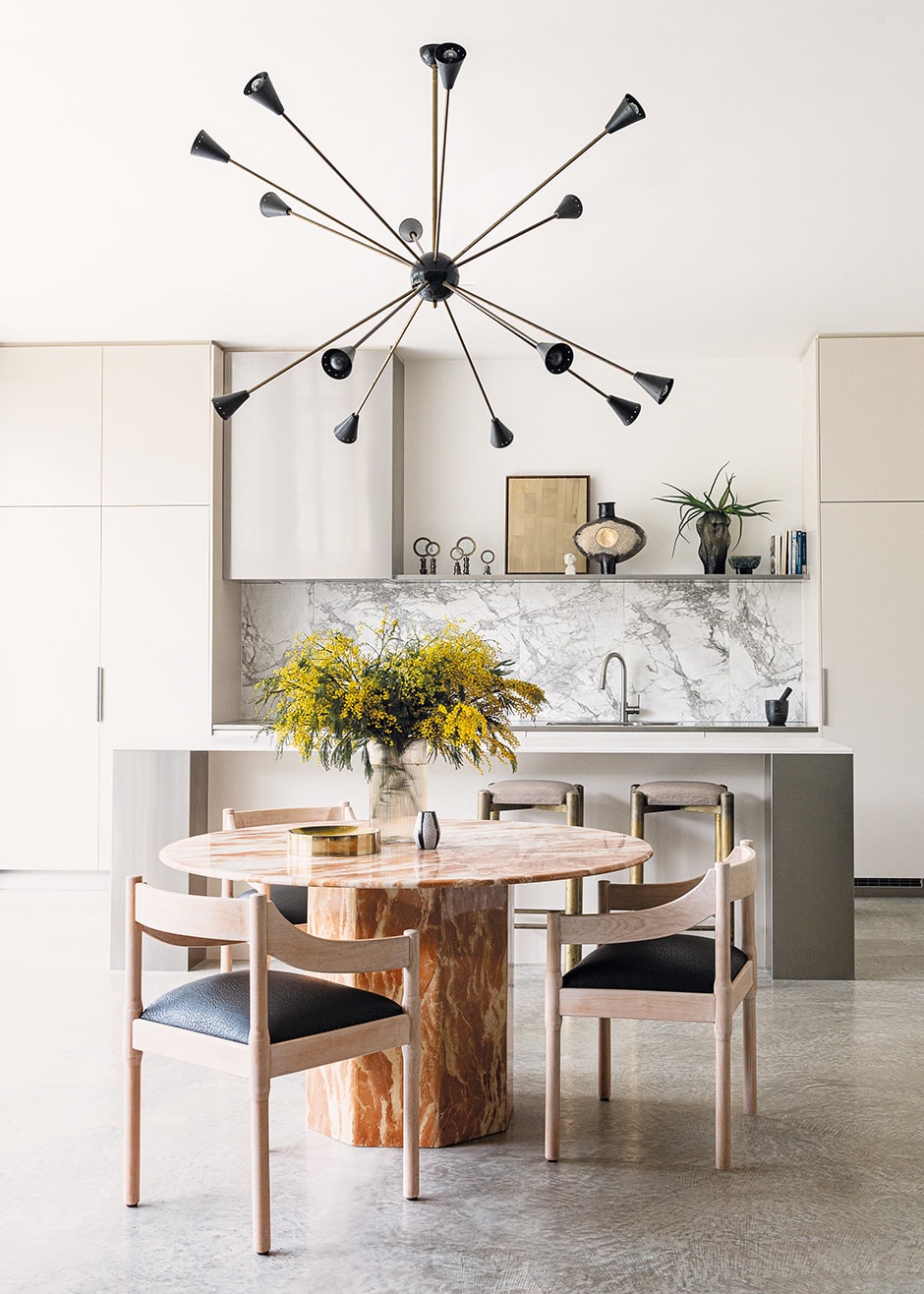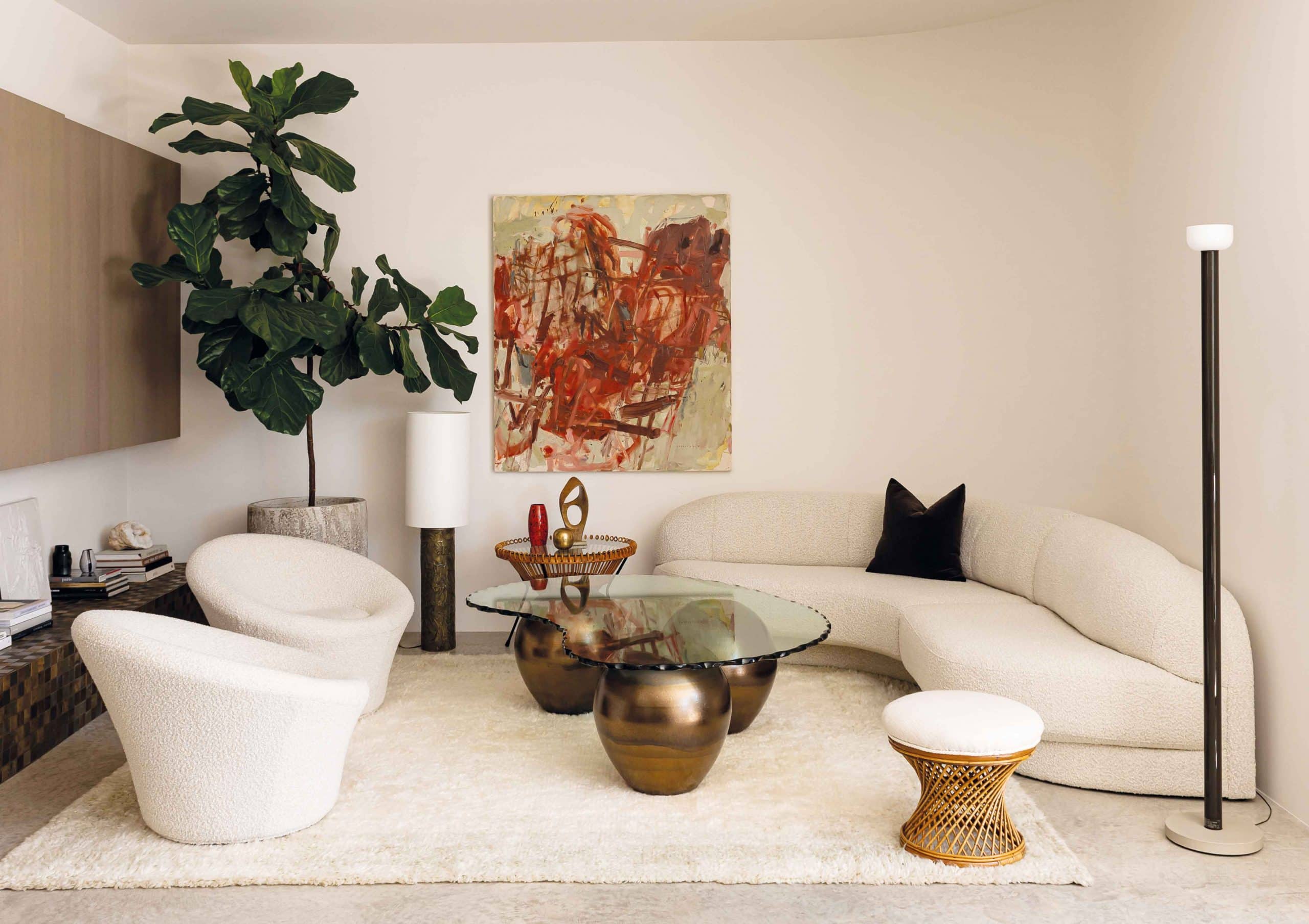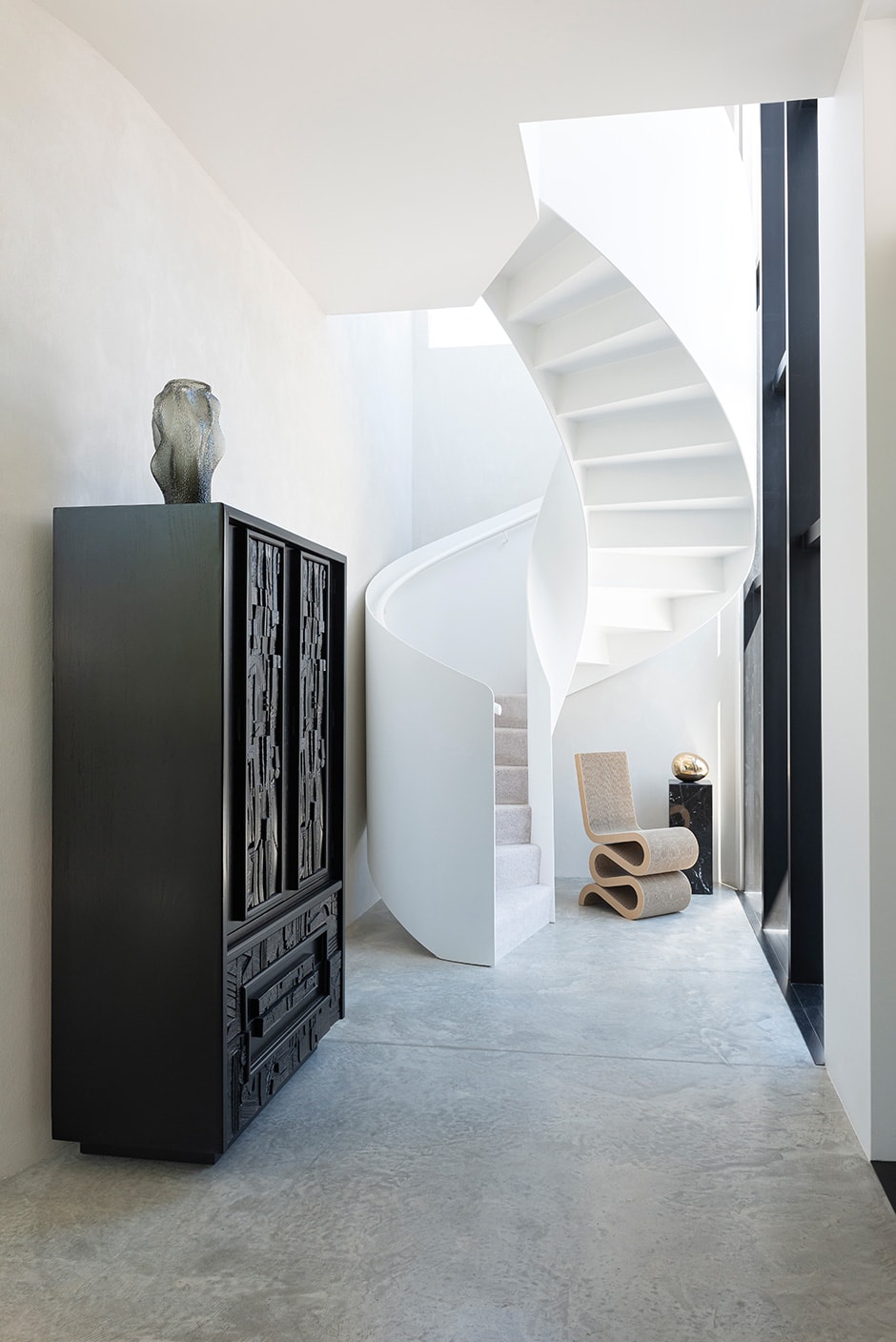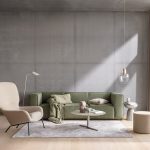In this online-only interview, the owner of our October/November 2022 cover home provides answers on how to decorate with standout vintage finds.
Jodi, what’s your advice for incorporating design from a favourite era or aesthetic — or several favourites, as you do with your own interior, pictured here — without making your home look too themed? I think you need to be true to yourself and develop your own sense of style. Don’t get caught up in following the latest trends, as they often don’t last. Mid-century pieces and antiques have become increasingly popular, but I’ve seen a few design styles from certain periods come and go.
Seek out certain items by designers you admire for their craftsmanship and beauty, and build on that. Look for things that speak to you, whether that’s an artwork, a sculpture or a unique piece of furniture. Often the more unique pieces aren’t easily accessible or cheap, so it’s a journey of discovery you can have fun with. I’m drawn to so many different design periods for different reasons, so I often bring pieces into my home that I love, but happily take a while to find the right spot for them.
What are some ways people can make their spaces suitable canvases for hero pieces? If you want them to do the talking, having a reasonably neutral-coloured background will allow them to shine. You could consider the architectural features of your home that will help frame them, such as the architraves. It helps to investigate architecture from the appropriate time period and take cues to adapt in a modern way.
I have an affection for tactile and textural elements, especially from the 1970s, but it’s all about balance. One way in which my husband and I incorporated this in our home was with the use of the slim, split-face white bricks we sourced from overseas, which give our house a modern appeal but with a mid-century Palm Springs feel. We used cork tiles in more intimate spaces, such as our bedroom and office. It was important to spread them throughout the house so as not to let them blend into one another and to allow them to shine on their own.

Is there a trick to adding statement items into an interior that also needs to look and feel liveable? Absolutely! If you have children and pets, things need to be durable or they won’t stand the test of time. Reupholster a designer sofa in a fabric that’s more suitable to family life. Learn to embrace materials that will age, or pieces that come with age. I love pieces that have a patina or are slightly imperfect — that’s what brings an element of character and helps to give your home that lived-in atmosphere.
Where you position these items in your home is also important. For example, consider putting a special chair in an entryway, where it can be admired but not used as an everyday piece as it would be in your living area [Jodi has done this in the lobby of her own home with a Wiggle chair designed by Frank Gehry in 1972, pictured at the bottom of this page]. Display precious items on shelves well away from wandering hands.
You embrace fluidity in your curation and regularly change up your interior — what practical and aesthetic considerations do people need to take into account if they do the same? Because of my business, I have access to beautiful pieces and can change things around easily, but we can’t all afford to do that on a regular basis, so I think it’s wise to invest in key pieces of quality furniture that can easily adapt to changes of taste and lifestyle. By not always subscribing to the same formula and aesthetic as everyone else, you can surprise yourself by creating new moments that speak to you. Look at upcycling as a way to breathe new life into furniture rather than throwing it away; if you’re not able to do it yourself, employ a restoration expert or an upholsterer.

Is there a hack for knowing when enough is enough? I think it depends on whether you’re a maximalist or a minimalist, and how you want a space to make you feel. It’s important to have a clear idea of the function of a space and what it calls for. A room can look confused if there’s too much going on and everything’s a mish-mash of colours and just lots of things piled in. Use storage to declutter and hide things you don’t want out on display, and when you do display pieces, keep like items together for unity and cohesion. A designer, furniture curator or stylist can help guide you on how best to decorate and layer within your home so it doesn’t feel overwhelmed with furniture and objects.
You’re a whizz with a vignette — do you follow any rules of thumb when you’re putting them together? No hard-and-fast rules, but the tried-and-true method for vignettes is looking to group an odd number of items together — three… five… — so things don’t look too staged. The height of the objects is important because you want your eye to travel up and down and across. I like contrasting materials and objects, so things don’t look flat; for example, soft, matte, muted-colour objects contrasted against something shiny, cool or metallic. And make sure you have some texture. It’s a sensory experience — look, touch and even smell are all important when styling a space.
I look at things like a composition on a canvas, with my days at art school coming into play; when a composition doesn’t feel right, I know when to pull back or add more. I use my camera lens to help me focus on an area — this allows me to be subjective and not get distracted by what I see outside the frame. Then it’s a process of adding, subtracting and moving things around till I’m happy. You could try using your phone’s camera as a tool, taking pictures of a space and areas within it, then evaluating what you see.

How about art? You skilfully incorporate it everywhere, including in rooms other people may not think to, like your kitchen and bathroom. What do you look at when integrating art into such spaces? I’m definitely an ‘If there’s a will, there’s a way’ type! I don’t like spaces to appear to sterile or utilitarian; a kitchen is functional, yes, but it’s also part of your home, so I like to display art in mine — little moments to enjoy, such as a personal memento, a framed children’s painting, or a work by a local artist you admire.
Obviously, practicality and placement are important. I wouldn’t put a framed photographic print above a hot stove or in a bathroom, where moisture can attack it. Bathrooms are best for sculptures and ceramics, but I have a mixture of artwork in my kitchen. Our ceilings are 3m high, so rather than have cabinetry over an entire wall, I opted for a stainless steel shelf that houses a collection of sculptures, painting and ceramics, as well as greenery and cookbooks. I like my kitchen to feel like an extension of the living area, and art helps to blur the lines.
I also suggest moving away from the idea that you need one big piece of art on every wall. Sometimes a small artwork can have a big impact in an otherwise minimalist space. It’s all about creating moments.
There’s an art to making a good vintage purchase — what should people keep in mind when they’re shopping? It depends on your objectives and budget. There are many facets to how we each perceive value. Is the item from a prominent designer? Is it an investment piece you could resell? Or do you simply love it because it’s a beautiful piece that will bring you joy for many years?
When investing in vintage pieces, do your homework, visit galleries and speak to dealers. If you’re looking at a certain item but you’re unable to view it in person, ask lots of questions, ask for an item report, and ask to see plenty of pictures or a walk-around video. If you’re sourcing from overseas, you need to consider not just the cost of the item but the cost of packing, international shipping, import duties and taxes — these are things people often forget, but they’re not included with the item or services and unfortunately can start to stack up. In contrast, when you use a local dealer reseller like myself, who’s done all the hard work and taken all the hidden costs away, you know what you’re buying up front.
Buying vintage is a sustainable choice, which I think is very important. I’d rather spend more money on a well-made vintage chair than a new one that’s mass produced and potentially not of the same quality. I nearly always buy vintage furniture over new. That’s not to say that I don’t appreciate or buy contemporary design, but I tend to feel a deeper connection to items with a history. Sometimes you get to hear great stories about a piece — where it’s come from, who owned it — and that’s what I love.
See more of Jodi’s incredible Tāmaki Makaurau/Auckland home in our October/November 2022 issue out now.
midcenturyswag.co.nz



